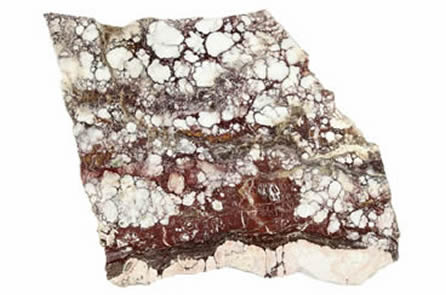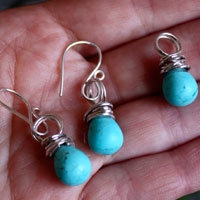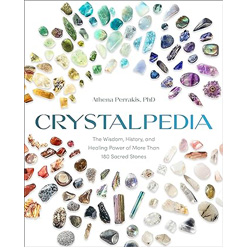- Jewelry
- Inspiration
- Our imagination
- Birthstones
- Celebrating with Eternal Flowers
- Druids and druidesses
- Flower meanings
- History, archeology jewelry
- History and healing properties of metals
- History and healing properties of stone
- Illumination jewelry
- Japanese symbols
- Maya calendar jewelry
- Stone color symbolism
- Stones catalogue
- Wedding anniversaries
- Searches a theme on the site
- Good Deals
- Paintings
- About
- Contact
JEWELRY
- Anklet
- Bracelets
- Brooches
- Cufflinks
- Earrings
- Pendants & Necklaces
- Rings
- Draw your jewelry
- How to clean your jewel
- Metal we used
INSPIRATION
- Our imagination
- Birthstones
- Celebrating with Eternal Flowers
- Druids and druidesses
- Flower meanings
- History, archeology jewelry
- History and healing properties of metals
- History and healing properties stones
- Illumination jewelry
- Japanese symbols
- Maya calendar jewelry
- Stone color symbolism
- Stones Catalogue
- Wedding anniversaries
- Searches a theme on the site
Magnesite: history, healing properties and lithotherapy

Magnesite characteristics

Magnesite is a mineral primarily composed of magnesium carbonate (MgCO₃). It typically forms in magnesium-rich environments, such as through the alteration of ultramafic rocks (like serpentinites) or via hydrothermal precipitation.
From a crystallographic perspective, magnesite belongs to the rhombohedral system within the carbonate group, similar to calcite. It can occur as tabular or prismatic crystals, but it is more commonly found in massive or compact forms. Its hardness on the Mohs scale ranges from 3.5 to 4.5, making it relatively fragile. The density of magnesite ranges from 3 to 3.2, which is typical for a carbonate mineral.
Magnesite exhibits a variety of colors, from colorless to grayish-white, and sometimes features yellow, brown, or slightly pink hues due to impurities such as iron, manganese, cobalt, or nickel. These trace elements give it subtle marbled patterns that enhance its aesthetic appeal. Thanks to its porosity, magnesite can also be artificially dyed to produce vibrant and diverse colors, making it a popular choice for crafting beads and cabochons in jewelry design.
The term "magnesite" was first introduced in 1785 by the French mineralogist Jean-Claude Delamétherie, who used it to describe several magnesium-containing minerals. In 1808, German mineralogist Dietrich Ludwig Gustav Karsten refined the definition to refer specifically to pure magnesium carbonate.
The name "magnesite" derives from magnesium, its primary component, which itself is named after the region of Magnesia in Thessaly, Greece. This area, rich in magnesium-bearing rocks, has given rise to several geological terms, such as magnetite and magnesia. However, it wasn’t until the late 18th century that magnesite was formally distinguished from other carbonates.
Magnesite is also known by less common historical names, such as argillomurite, baldissèrite, bandisserite, giobertite, baudisserite, magnesianite, carbonate magnesia, or roubschite. These historical terms reflect the successive discoveries and the various regions where it was identified.
Beyond its decorative use in jewelry, magnesite has significant industrial applications. When heated to high temperatures, it produces magnesium oxide (MgO), a refractory material used in:
- Manufacturing refractory bricks for industrial furnaces.
- Steel and glass industries, owing to its resistance to high temperatures.
- Production of fertilizers and magnesium-based chemicals.
- Medical and pharmaceutical sectors for magnesium supplements.
Additionally, its absorbent and filtering properties make it a valuable material in chemical and environmental processes.
Mines: Germany, Australia, Austria, Brazil, Spain, France.
History, legends and beliefs about magnesite
Magnesite, though less prominent compared to more renowned minerals, has a history tied to its practical uses and remarkable properties. Known since antiquity but not systematically identified as a specific mineral, it was often mistaken for other white stones such as calcite or marble due to its similar texture and appearance.
In ancient times, magnesite was likely used empirically for its absorbent and purifying qualities. While not extensively documented, some civilizations are believed to have employed raw forms of magnesite for purposes such as:
- Water purification: leveraging its ability to absorb certain impurities.
- Pain relief: healers occasionally used light-colored stones, such as magnesite, for their supposed soothing properties.
During the 19th century, with the rise of modern mineralogy, magnesite gained particular significance as a source of magnesium, an element that became essential in both industry and medicine. Magnesite was mined extensively, especially in Austria, Slovakia, and later in China, for industrial applications such as the production of refractory materials and chemical products.
Healing properties and benefits of the magnesite
Throughout human history, man has attributed various healing properties, virtues, and beliefs to magnesite. The information presented here is shared for cultural and historical purposes, to illustrate the symbolic relationship between this stone and man throughout time and civilizations. It does not constitute a therapeutic or medical recommendation.
- Thanks to its high magnesium content, magnesite is believed to act as a natural remedy to relax tense muscles and relieve bodily pain, particularly those caused by everyday stress. It is ideal for individuals prone to cramps, spasms, or back tension.
- Magnesite may serve as a natural regulator, facilitating digestion and alleviating constipation through its relaxing effects on intestinal muscles.
- It is thought to help soothe inflammations in the digestive system and other areas of the body, including the joints, providing relief for conditions such as arthritis or rheumatism.
- By supporting the absorption of this essential element, magnesite promotes optimal functioning of the muscles, nervous system, and energy metabolism.
- Due to its magnesium-rich composition, magnesite helps strengthen bones and teeth, aiding in the prevention of osteoporosis and dental issues.
- Certain studies suggest that magnesite may play a role in reducing the size of fibroids thanks to its anti-inflammatory and balancing properties.
- By enhancing metabolic processes, it could contribute to lowering bad cholesterol levels, thus protecting cardiovascular health.
- It is also thought to naturally reduce fever in cases of infectious illnesses.
- Its protective nature makes it an ideal ally for sensitive skin, acting as a barrier against irritation and skin reactions.
- Magnesite is often used to alleviate headaches, including migraines, providing quick and natural relief.
- Thanks to its absorbent properties, magnesite can also serve as a natural deodorant, neutralizing unpleasant body odors.
- Magnesite is the ultimate relaxation stone. It acts on the nervous system to ease tension, calm the mind, and reduce symptoms of anxiety. It is especially recommended during times of intense stress or nervous exhaustion.
- Magnesite is believed to help manage life transitions more effectively by bringing mental clarity and serenity. It is a valuable support for those facing emotional challenges or feeling stuck.
- By calming the mind, it promotes concentration and helps eliminate intrusive thoughts, making it ideal for students or anyone engaged in demanding mental activities.
- Magnesite is said to act as a catalyst for expressing buried emotions, enabling the release of emotional blockages and fostering inner balance.
- When used in meditation, magnesite assists in achieving a state of deep calm, facilitating letting go and connecting with one’s inner self.
- Magnesite is thought to harmonize the energies of the body and mind, creating a sense of unity and inner peace.
- It is particularly recommended for empathetic or highly sensitive individuals, as it acts as a shield against negative energies while strengthening emotional stability.
- Placed under the pillow, it is said to encourage restful sleep and help calm nighttime thoughts.
 Please note that all healing properties attributed to stones come from ancient traditions and various cultural sources. This information is provided for informational purposes only and does not constitute medical advice. In case of any health concerns, it is recommended to consult a qualified professional.
Please note that all healing properties attributed to stones come from ancient traditions and various cultural sources. This information is provided for informational purposes only and does not constitute medical advice. In case of any health concerns, it is recommended to consult a qualified professional.
Magnesite jewelry samples
To learn more about litotherapy, we recommend you the following books:




